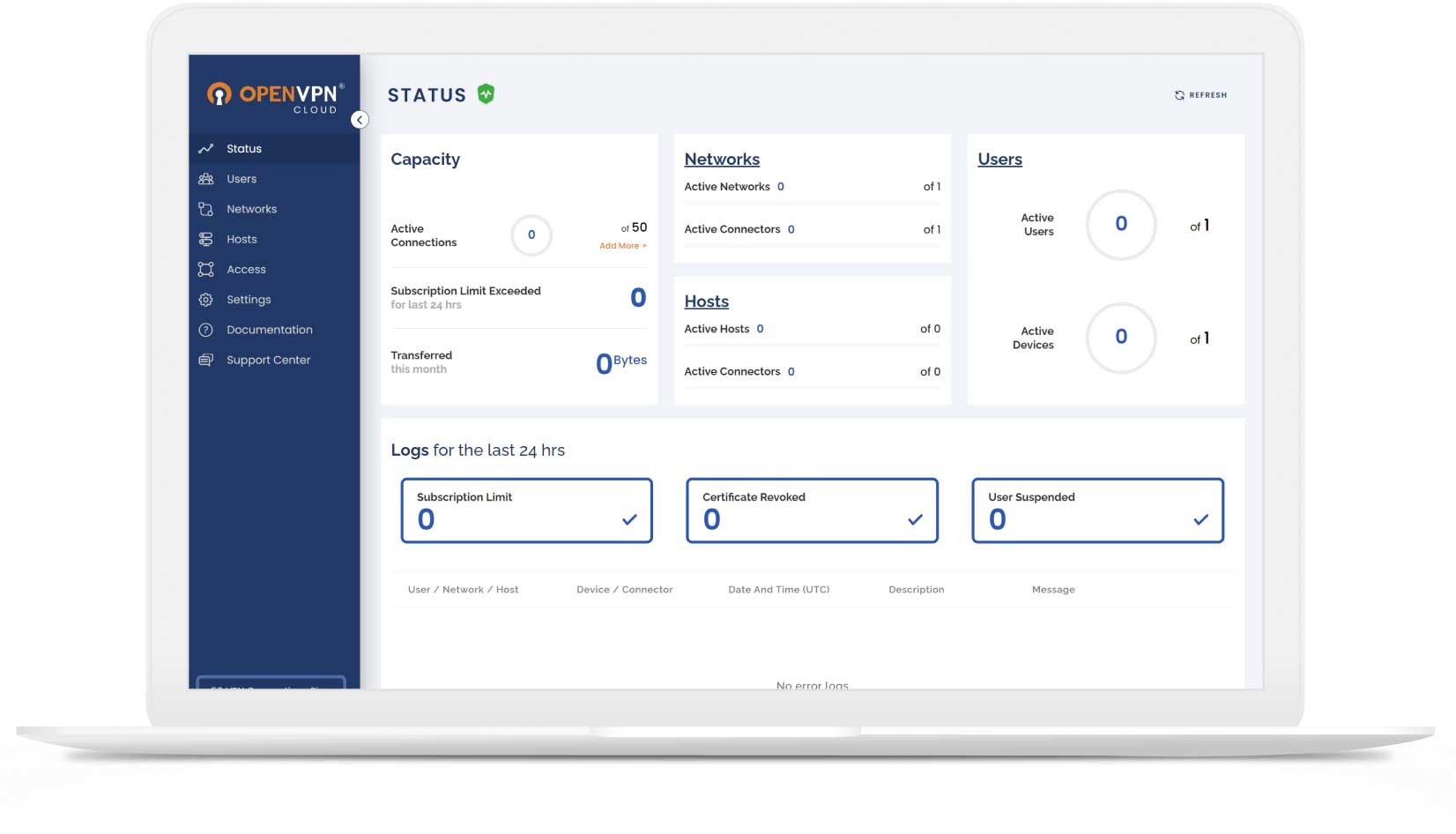


Step 2: Start the OpenVPN Server systemctl start enable status 3: Generate the Client Configuration File. Step 1: Create a new OpenVPN Configuration file inside the /etc/openvpn/client/directory/ file path nano /etc/openvpn/server/nfĪdd the following in the text editor and replace anything labeled \ with your server hostname.

Step 13: Copy all of the Client Certificate and Key Files to the /etc/openvpn/client/ directory cp pki/ca.crt /etc/openvpn/client/Ĭp pki/issued/client.crt /etc/openvpn/client/Ĭp pki/private/client.key /etc/openvpn/client/ Type the word, 'yes' then press enter to confirmĮnter the passphrase you noted down in Step 5 Step 12: Sign the Client Key using the CA Certificate. Press enter or input a common name of your choice. It looks like "hwsrv-\" cp pki/ca.crt /etc/openvpn/server/ Step 10: ** Copy the certificate files to /etc/openvpn/server/ and **replace the \ with the server hostname. Step 9: Generate a strong Diffie-Hellman key to use for the key exchange. It should look something like this: pki/issued/.crt: OK It looks like "hwsrv-\": openssl verify -CAfile pki/ca.crt pki/issued/.crt Step 8: Verify the generated certificate file with the following command. easyrsa sign-req server Īdditionally, you'll need to provide a passphrase. Step 7: Sign the server key using the CA. Alternatively, you can just press "Enter" to use the default. Some names you could use would be your user, host, or server name. Step 6: Generate the Server Certificate Files. These certificates will be used to sign the server and the clients' certificates. The command will then generate two files named ca.key and ca.crt. You can press enter to use the default or input a custom common name of your choice. You will also be asked to input a Common Name. This passphrase will be required in future steps.
Openvpn cloud password#
Note the password externally and input it into the prompt. Set_var EASYRSA_SSL_CONF "$EASYRSA/openssl-easyrsa.cnf" Set_var EASYRSA_EXT_DIR "$EASYRSA/x509-types" Set_var EASYRSA_NS_COMMENT " CERTIFICATE AUTHORITY" Set_var EASYRSA_REQ_ORG " CERTIFICATE AUTHORITY" Additionally, replace the "set_var EASYRSA_REQ_EMAIL" line with your email: set_var EASYRSA "$PWD" Step 3: Add the following and replace anything with \ with your VPS hostname (it looks something like hwsrv-\. Step 2: Setup Certificate Authority cd /etc/openvpn/easy-rsa
Openvpn cloud download#
Step 1: Download easy-rsa for managing SSL Certificates cd /etc/openvpn
Openvpn cloud install#
**Step 1: ** Install the OpenVPN Server dnf install epel-release -yĭnf install openvpn -y Setting up the Certificate Authority Step 5: Add the following line to the nf file to enable IP Forwarding \_forward = 1 Step 3: Set SELinux to Disabled SELINUX=disabled Step 2: Edit the SELinux config file nano /etc/selinux/config Note that you will need to use a command-line interface to do so. You can install OpenVPN on either a Linux, Windows VPS, or Dedicated Server. You will need root or administrator access to a server. You can connect devices to the VPN server and use that network to mask your local area network. VPNs take advantage of the network provided by the VPS without needing to connect through an SSH or RDP session.
Openvpn cloud software#
Push "route 10.128.0.0 255.128.0.OpenVPN is a Virtual Private Network (VPN) software installed on a Virtual Private Server (VPS). I don't know why but I'm only able to ping 10.162.0.2 and not my others VM like 10.162.0.4 or the gateway 10.162.0.1 I don't want to redirect all traffic but only this lan through the VPN. What I want is to allow access to the Google LAN 10.128.0.0/9 from home. I'm trying to install a OpenVPN server on a Google Compute Engine VM to be able to access the LAN of my VM running in Google Virtual Private Cloud VPC.


 0 kommentar(er)
0 kommentar(er)
